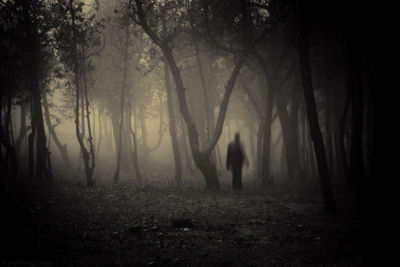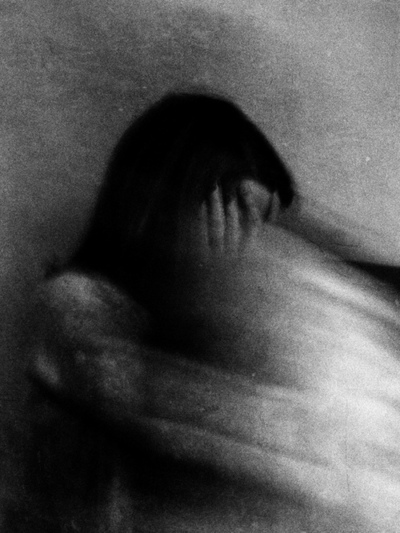(7 Day Intensive at Centre of Gravity, 180 Sudbury Street, Toronto, Spring, 2011. Talks by Michael Stone, notes by MH (with errancies, mishearings, conjectures.) This is talk 4 of 8 on Dogen’s text Time is Passing), written in 13th century Japan.)
Vishana and Alys have been collecting petals for The Buddha and Guanyin The way we look at the alter is training for the eyes. How do we receive with our eyes the flowers, the mala-s, and the Buddhas? When we go onto the street, away from the altar, do our gazes alter? Can we look with our altar eyes at the crooked sidewalk, the crooked post, the crooked cat? Can we maintain the same gaze for what’s crooked in us? This is practice.
One translation of Uji is ‘come closer’. Come closer to the part of you locked up, come closer for a while. Dogen is saying to you that everything in the world is beckoning you to get wet. When Michael first started practicing ashtanga yoga in Toronto there were no studios, so he would get together in a space reeking of paint, led by Ron Reid. Now Ron is a very shy guy, he doesn’t talk so much, and many young people came and offered him all kinds of projections. A friend of Michael’s was working at a juice place, and she saw Ron looking at her, and he wasn’t only looking at her he was giving her, you know, ‘The Look’, like he was going to tell her ‘The Answer’. And then he crooked a finger in her direction, inviting her to come closer, and asked, “Could I have a straw?”
The common translation of the mantra that ends the Heart Sutra — gate gate paragate parasamgate bodhi svaha — is that gate means gone, from the root gan. Traditionally the mantra has been translated ‘Gone, gone, beyond gone, across the other shores.’ Michael was speaking to Kaz Tanahashi, and Kaz told him that it is possible that gate comes from the root gati, which means “come”. The final mantra of the Heart Sutra might translate: ‘come, come, come closer’ or ‘arrive, arrive, arrive’.

‘For the time being three heads and eight arms.’ We translated this as a ‘wrathful deity’ (or a day before espresso). When you’re angry it’s hard to be a Buddha. Can you be an angry Buddha instead of being an angry eight or ten year old? Next time you’re angry, check in to see how old you are. Perhaps if you find that you’re only six years old you can give yourself a break, you’re only a child, anyone would have been triggered, you’ve stepped into conditions that have caused you to be six again, and you can let yourself off the hook and take care of your anger. You can be a Buddha in anger. We need this anger so that we can fight for justice. Anger is really valuable; it makes change. How to be in it, but not to stew in it? How to do something positive with it? Maybe you can be a Grief Buddha, a Sad Buddha, a Bloated Tryptophan Buddha. There is no absolute enlightenment; because, time is not absolute. Instead there are only fingernails and gall bladders and hearts, some of which are broken, palpitating, lost and not lost.
The Roshi loved to say: Ichi-go ichi-e. One time, one meeting. One meeting, one chance. In each moment you have one chance. When you’re in a yoga posture, can you meet the patterns as they arise? You’re learning a skill when difficult patterns arise. Admit them; allow them entry. And then you take that encounter off the mat. Those moments are the Buddha saying, “Come closer.” Maybe your femur bone is whispering to your quadriceps, “Come closer.”
There was a woman who walked into her house. She turned on the light switch and at that moment, her house blew up. The whole thing was razed to the ground. Miraculously she was more or less unharmed. But this is an experience in her past that is continually coming back to her in the present as a trauma. Doing meditation, she learned that she could use what had happened to her, to use it for the good. Dogen says that your life is precious because time is passing. But things don’t pass, because if you come closer to certain configurations, you are once again that child, a traumatized person, holding the light switch of your former house. Everything is passing but nothing passes. It’s all still here. Please don’t imagine that your practice will build for you a vermillion tower where you don’t have to feel anything again – though this is the fantasy, isn’t it? Don’t we all share this fantasy to a certain extent? Tomorrow you could be in a configuration that could bring on that young child again. Time is pulling us closer to death, but perhaps death is just another way of describing radical change, the sum of all that we fear.
5 kinds of Fear
In the Buddhist scripture collection known as the Abhidharma, five great fears are listed. Since I first read this list, I’ve often reflected on how whatever fear I had coming up might fit into this ancient file system. The Abhidharma’s five great fears are:
1. Fear of death (fear of your own death, fear of someone else’s death, fear that the self that I am is impermanent and has an expiry date).
2. Fear of loss of livelihood.
3. Fear of unusual states of consciousness. This fear is pronounced amongst those who meditate. Will I lose my mind? Will I go so far out there that I’ll never find my way back?
4. Fear of loss of reputation.
5. Fear of speaking before public assembly.
Our commonly held symptom in this time is busyness. ‘Oh no I can’t, I’m too busy.’ Perhaps we keep busy so that we can smooth over our fears. Perhaps our busyness is a way of dealing with these fears. Pain comes with change. The Lotus Sutra teaches us that life is like a funeral. There’s always an invisible funeral happening. How to be in love with what you’re doing and feel it slipping away at the same time? How to be fully engaged and detached at the same time?
Michael mentions his appreciation for the writer Annie Dillard, in particular for her book, For the Time Being. He tells us how Annie was attending a science lecture when the scientist started talking about evolution and time. Annie’s friend fainted. When her friend came back to consciousness, Annie asked her what had happened. Her friend responded, “What did he just say about the world ending?” Annie said the scientist said we would all be gone in 6 billion years. “Ahh,” her friend said, “I thought he said 6 million years.”
Supposedly, there are 400 990 180 ‘moments’ in a day. How can we measure a moment? Kshana in Sanskrit means a moment, a snapping of the fingers. One moment is 76th of second. Michael reminds us, ‘That’s how quickly your life is going by.’ The wheel of time is constantly spinning. The Klesa wheel spins 64 times.
Sometimes it feels like we are practicing alone. Interviewed in Harper’s Magazine, Martin Scorcese describes Christ as fully man and fully God. Time is passing. We need to be in time, fully. We need to be fully women, and fully goddesses. We need to be fully parents, and fully practitioners. We need to be in our lives, fully present. When Michael picks his son up at 3:30, his son needs him to be there. His son needs his time being at 3:30. When he plays with his son, for that time being, Michael needs to fully play Lego, not tell him about Dogen’s perception of the Time Being of playing Lego.
In order to be in relationship completely, we need to be on solitary paths. We need to know how to act entirely within our lives, in time, and to fully take care of ourselves. If not, we enter what psychologists call “co-dependent’ relationships. This is unhealthy. Many marriages are co-dependent.
We each experience time differently. As Einstein has said, time and space are relative. Time leaves a residue on our hands, on our faces. We experience the wrinkles of our time being. Michael tells us he was on an airplane once, looking at his hands, observing this phenomenon. Time changes us, and we experience the residue of time. We do not have a direct experience of time, but rather we experience its residue.
How do we measure time? How to we quantify it objectively? There are atomic clocks that use electronic transition frequencies to measure time. They are considered the most accurate time measuring instruments on Earth. But there are other experiences of time. We can’t see the other side of the cushion; there’s always a shadow, a part you can’t see. Is it the same with time?
Your mind can’t catch up to a moment of time. You can’t do something that could freeze time and hold it in a fixed way. So we’ve invented photographs and movies in order to see ourselves in a deeper and different way. Maybe taking a picture is dripping a cup into the river of time, even though we can’t look at a photograph the same way twice.
Dogen uses this term: “practice-enlightenment.” Practice and enlightenment are inseparable. You don’t practice to get enlightened, you practice enlightenment. Patanjali writes in The Yoga Sutra: ‘Abhyasa Vairagyabam’. It is the practice of letting go, which is the practice of enlightenment. Dogen won’t separate the act of enlightenment from the doing of enlightenment. How do you practice enlightenment? You get splattered with mud and water.
We need to truly experience time. Sometimes we need to fully experience the time of the sun. Sometimes, rain. Sometimes, flowers. Sometimes, thorns. We need to make use of our time. We need to experience the true tempo of time. The frames of a film are faster than what your eyes can keep up with. This is how fast the Buddha goes. Perhaps we need to catch the Buddha within the gaps.
Michael reads poems by the Canadian poet Robert Bringhurst.
Saraha
What is
is what isn’t What isn’t
is water. The mind is a deer
In the lakes of its eyes,
the deer and the water
must drink one another.
There are no others,
and there are no selves.
What the water sees
is – and is not what you think
you have seen in the water.
There is no something, no nothing,
but neither. No is
and no isn’t, but neither. Now,
don’t defile the thought
by sitting there thinking.
No difference exists
between body and mind, language
and mind, language and body.
What is, is not. You must love
and let loose of the world.
I used to write poems,
and like yours, they were made
out of words, which is why
they said nothing.
My friend, there is only one word
that I know now, and I have somehow
forgotten its name.
Saraha’s Exercise for Beginners
What is the brain but the back of the face?
Climb down from the elephant
of the mind you are riding, climb down
and leave it to drink
or to drown in the river.
What stirs in the heart
comes to rest in the heart
like dust in a cave.
Thought is thought, and not
anything more. Seeing is seeing.
What is is what is. These three together
are what they are, and their total is one,
which is what there is and is equal
to zero. A is not A; one is not one;
this too is the rule.
Only insofar as one is
speechless can one really
think with words.
Yesterday’s time and today’s time never leave and are always leaving. Awakening energy and shadow energy arrive at the same time. Delusions don’t go away. If you can’t accept the delusions in yourself that don’t go away, you’ll project them onto other people. And on the other side, we all want to go around projecting our better sides, our better aspects to others. This incompleteness. But the time being swallows up the good times and bad, the perfect campfire and the time you got burned.
Basho says in “Winter Journals”, ‘Go to the pine if you want to learn about the pine, or to the bamboo if you want to learn about the bamboo.’ Learn from pine. He’s saying: If you want to heal sadness, you have to do it in sadness. If you want to heal relationship, you have to do it in relationship. You have to go back to the place you were wounded.
The past can be so painful because it doesn’t go away, so you practice enlightenment with it. Here is an exercise via Miranda July. Think of a person who has never really give you the one thing you wanted. It might be your father, your boss, a teacher, an ex-lover. Now write a letter to you from that person. This letter can say at last the thing you’ve been waiting for them to say. Now ask a friend to read it to you as if they were that person.
Michael tells us that one way to translate Uji is “naked time”.
How do we end a sentence? Does it ever really end? Does a full-stop end a sentence? The eyes of an animal are like the eyes of your own eyes. Have you ever looked at a cow’s eyes? A loon’s eyes? Fish’s eyes? To Michael, fish’s eyes always look like they are crying.
Michael describes his uncle’s death. All his relatives were sad, but his uncle, Ian, was not dying, in his experience. How do you die? How do people experience death? Often it is in hospitals.
‘Gata”(removed, gone, lost, leaving aside, death) is “sometimes”. For the time being, gata. For the time being, death.
When you meditate, Michael says, it is worst when you try to conceptualize time. During long retreats when meditating, if you sit, thinking of the time after meditation when there is the beginning of lunch, it creates restlessness, discomfort, grasping. Meditative time lacks an awareness of measuring time. It lacks conceptualizing an after and a before. Just as we cannot fully measure our emotions, we cannot fully measure time.
We don’t doubt time, but we doubt, and doubt can be healthy. We can never verify what happened in the past. We can take a photograph, but we can never look at the same photograph twice in exactly the same way. There are traces of time, but we can’t see time. We can doubt that we doubted in the past. We can doubt our doubt. “Don’t be overconfident of our ideas”, advises Michael, “ideas fade”.
Michael asks us to take out a page of paper and to write “birth” at the bottom of the page and “death” at the top of the page. He asks us to draw a vertical line from birth to death. He asks us to draw a horizontal line where we think we are now.
I have a difficult time doing this. I write “birth” easily, but my hand shakes when I write “death” at the top of the page. I ask myself, “Do I put the line to represent my chronological age, assuming I might die at a predicted age of, say, 90? Or do I place the line close to death, for from experience of nearly dying once, it seems death could happen unexpectedly, unpredictably, at any moment. Where am I truly in relation to birth and to death?
One student puts her horizontal line in the middle of the vertical line. She says that after entering older age, she has experienced time differently, and she feels now “in the middle” of her life. Others place their horizontal line in an assumed chronological position. Doing this brings surprise to some of us, for how much closer to mdeath we are than some of us had thought…
Michael describes himself when he was young. He says that he was angry and anxious at times. Sometimes, he thinks, now that he practices, “Now I’m more calm and more open.” We have a tendency at times when we see ourselves as yoga practitioners, to see the anger and anxiety of our youth as gone. Somehow we think practice makes us “more spiritual”. We often get into the trap of thinking that we are therefore free of uncomfortable emotions.
Often we are around people from our past, we can be triggered. Perhaps the reason people eat turkey at Christmas is not because of the taste. Perhaps the reason people eat turkey at Christmas is because of the tryptophan. It nulls us. It creates a half-asleep intimacy.
The path is not separate from this moment. You are not separate. “This is the understanding that self is time,” says Dogen. We need to stand in our lives, to have a beginner’s mind. So often we are unsatisfied, we keep ourselves busy, so we are never bored. Why do we feel the need to fill each moment with activity?
Everything is too immense to understand. Just the inhale is everything. What’s here is everywhere. What isn’t here is nowhere. The deep secret of meditation is entering time. Inhale. Exhale. Adhere to your breath in this moment. By doing so, you become a student.
Michael tells us that after two years of practicing without connecting with his family, eating the same thing everyday and wearing the same thing everyday, living ascetically, he saw his sister who had just moved to Montreal to become an artist. She took him to a textile shop, and Michael marveled at the fabrics. “The material is spiritual”, he thought. To marvel at the beauty of a pattern on a piece of cloth is practice.
When Michael was in New York City, his son wanted to go to the Intrepid Sea, Air & Space Museum. Michael was reluctant, but he found that even though he’s a pacifist, he could appreciate the engineering of planes. Sometimes practice is to be able to see what we don’t agree with. To see another as a Buddha is to become awake.
Dogen is trying to give you a mood. Many people do the technique, but they don’t have the spirit.
Was the spirit of practice here?
For homework, Michael asks us to get out of bed in the morning, put both feet on the ground and say to ourselves, “This is practice period. Today. For the whole day. Today, I’m going to really practice.” Shunryu Suzuki when he got up in the morning said, “Yes!” When we lie down at night, can we say “Today was a day of deep practice. Was the spirit of practice here?”
(A statue of Guanyin stands in the centre of the room, listening to, balancing and riding the waves of life. We write on slips of paper of the things we wish to let go and leave them for her ears to hear. A sculpted human ear sits beside her reminding us of the listening. Her name, Guanyin, is short for Guanyinshin, meaning “Observing the Sounds (or Cries) of the World”. We place our notes on a string with paperclips above her head. We hang our sounds for her, our cries for her, like laundry on her line, like prayer flags in her wind ~ Michael says he wish he could hang his whole body on the line before Guanyin).




